If you pay attention you just never know what you’ll encounter “out there”.
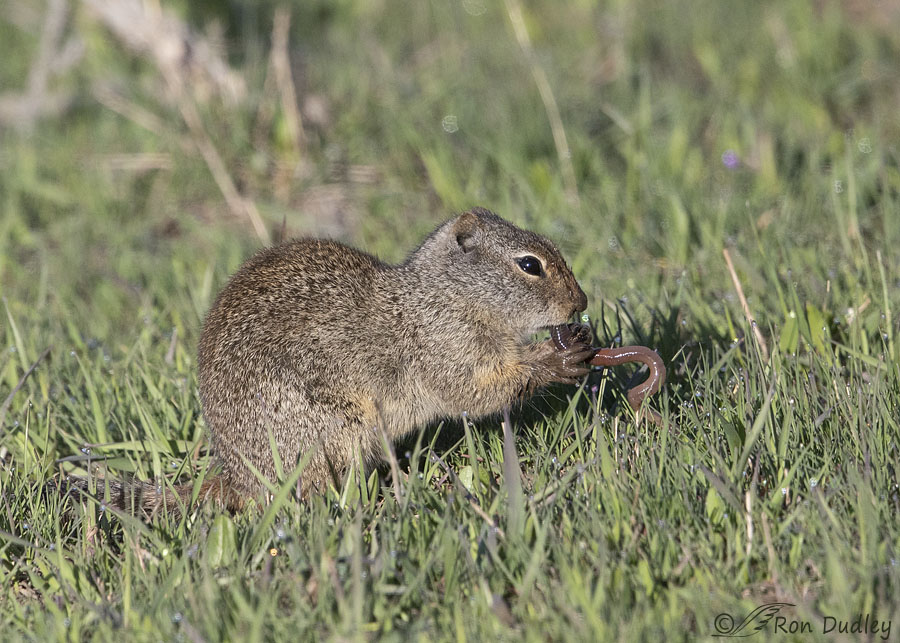
Two days ago while looking for birds in the mountains we found this Uinta Ground Squirrel beginning to enjoy “his” earthworm breakfast. I’ve photographed this species eating various kinds of vegetation countless times in the past but apparently this feller felt the need for some additional springtime protein.
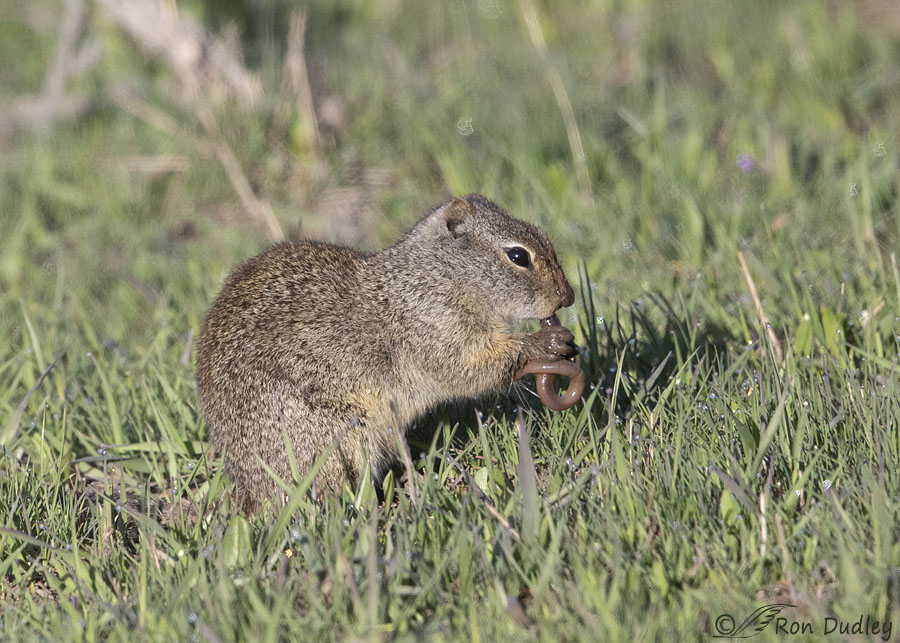
The worm was a slippery squirmer as most earthworms are in situations like this. But given the grasping and manipulative effectiveness of the rodent’s “hands” it didn’t have a chance of escape.
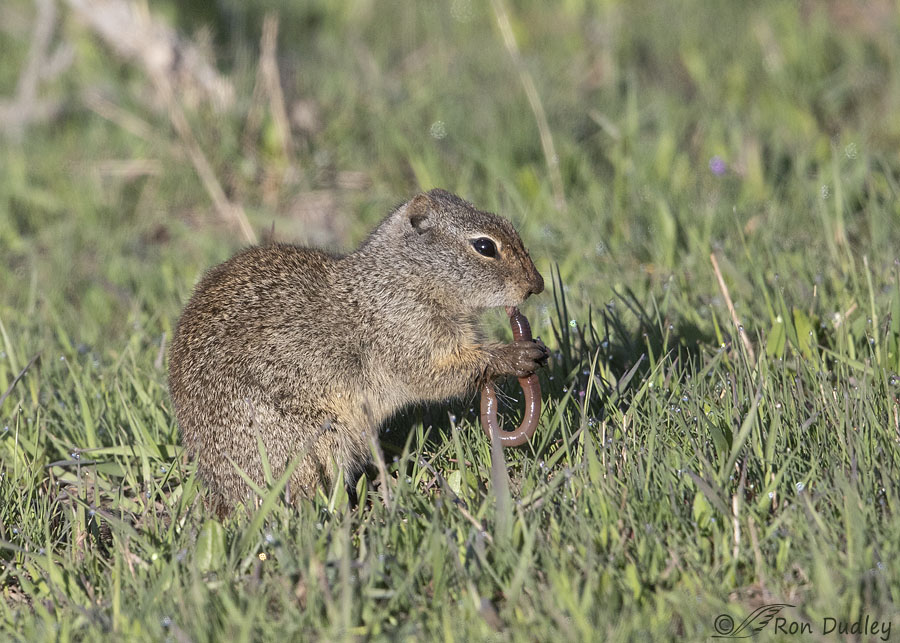
Notice that the squirrel began his meal at the anterior or head end of the worm which tends to be darker in color and a little more robust than the posterior end.
A lighter colored reproductive organ called the clitellum is closer to the anterior end and is typically used to distinguish the “head” end from the “tail” end but in this photo most of the clitellum is hidden by the rodent’s grasping paws. In fact he appears to be using the clitellum as a “handle” of sorts.
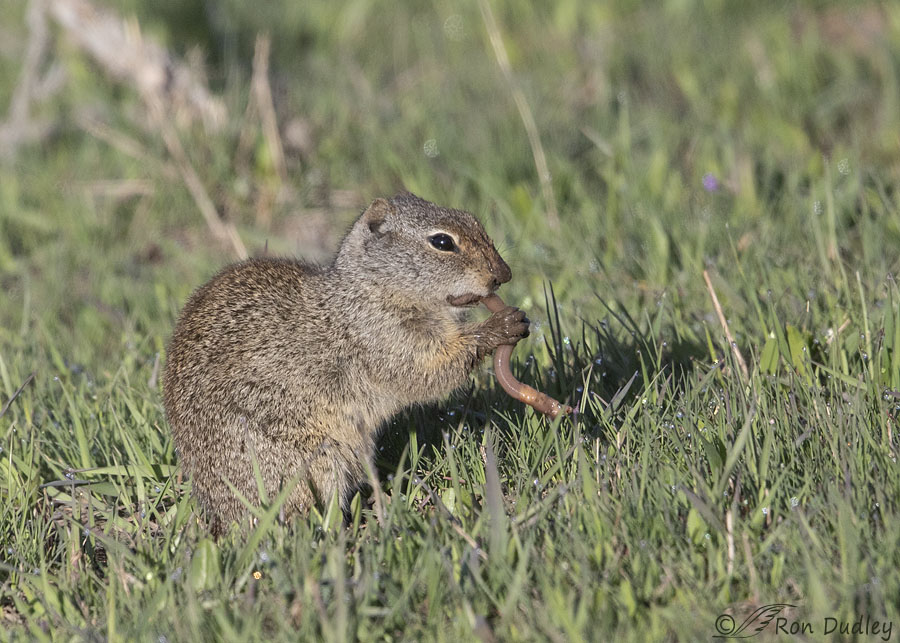
But after much of the anterior end had been eaten the squirrel turned the worm around and began to work on the posterior end. That allowed us to see the clitellum, the lighter colored swelling covering several segments nearer to the head end.
I can only guess why the squirrel turned the worm around but he appeared to.
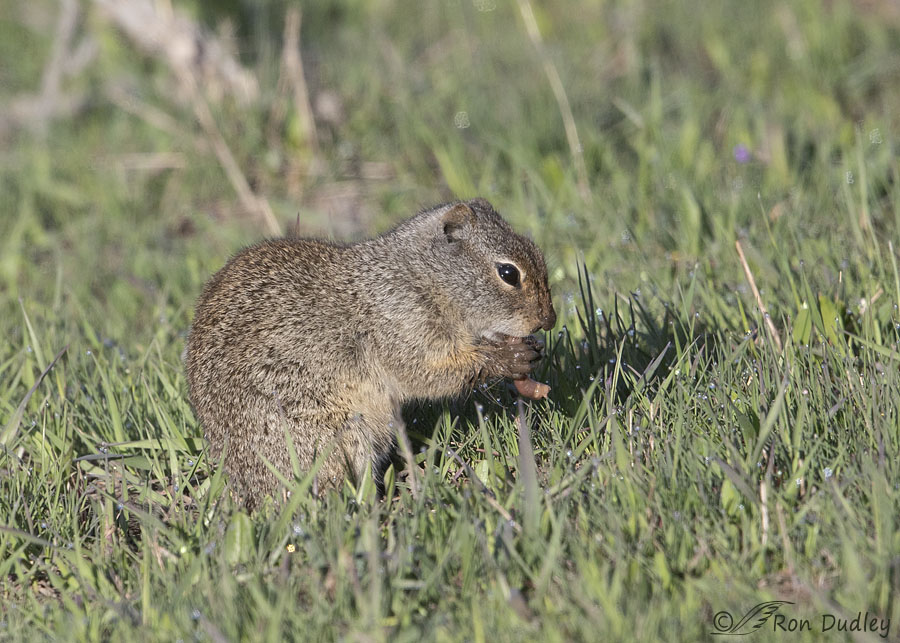
As he continued to munch away the remnants of the worm became shorter and shorter.
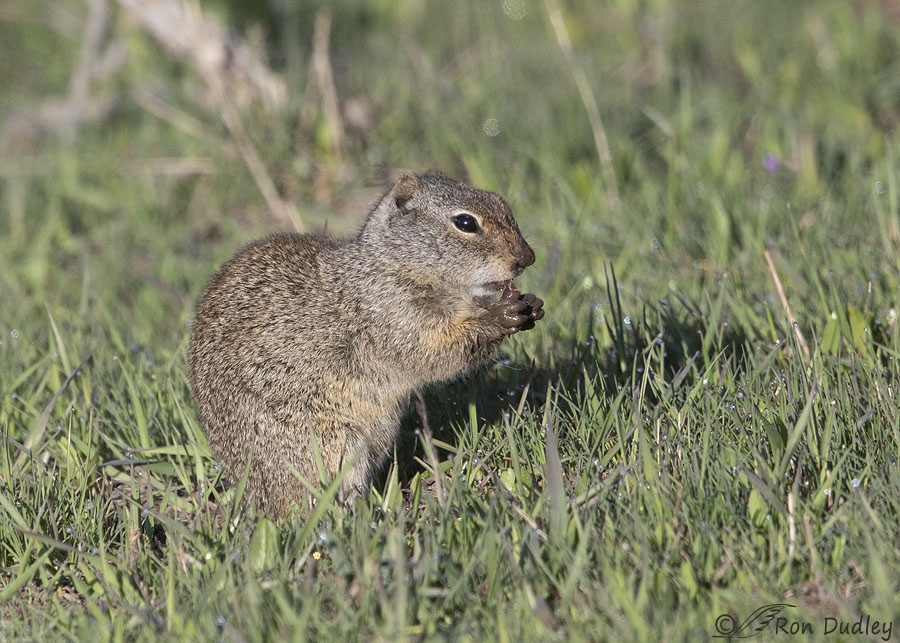
Not much left now.
Nothing left but the crumbs. Here he’s still chewing the last wormy morsel.
Uinta Ground Squirrels are primarily herbivores, eating mostly grass, seeds and leaves (on this same morning I photographed them eating both grass and sagebrush) but they’re also known to eat a small amount of earthworms and even discarded human food.
But worms for breakfast – this was a first for me so it was fun to get documentary photos.
Ron
Note: The clitellum has a reproductive function when hermaphroditic earthworms reproduce sexually. When the worms mate the clitellum secretes the protective cocoon around their fertilized eggs. You may have found some of those egg-filled cocoons while digging in your garden.
But then you probably remembered that from your high school biology…


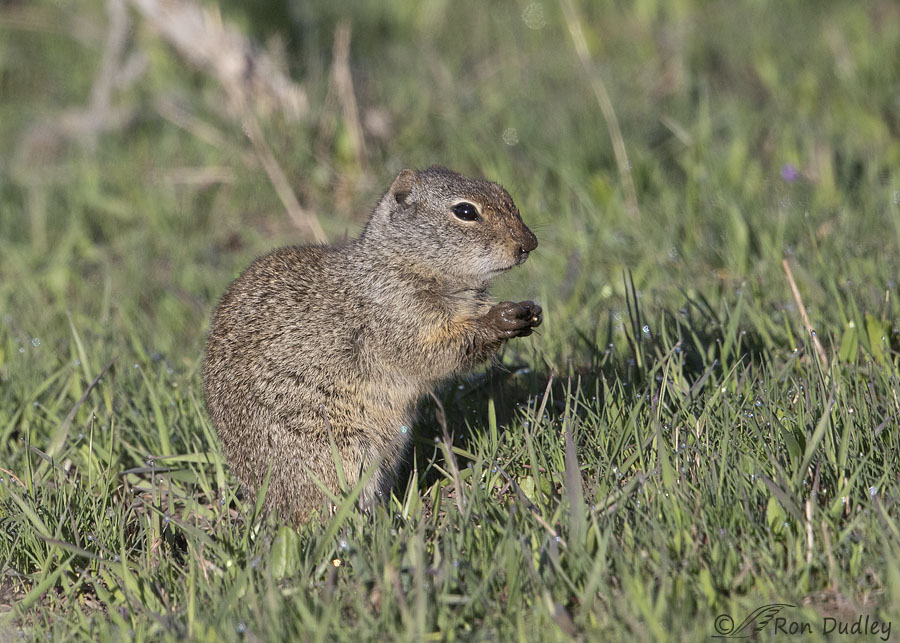
Seems like we did the worm thing in 8th grade biology…….high
school biology was a real drag particularly when naive me repeated my mothers smart ass answer to what a spirochete was – “one night with Venus and the rest of your life with Mercury” – didn’t go over so well……
Hot damn, I wish I’d known that one while I was still teaching, Judy. I love it!
Sounds like your bio teacher really lacked a sense of humor.
I think I’d have liked your mother…
Nobody loves me, Everybody hates me,
I think I’ll go eat worms
Long ones, short ones, fat ones, skinny ones…
I hope that he felt satisfied with his long and fat one.
Yet another very different start to the day.
Just the same, I think my nausea relished this series rather more than the rest of me.
Here’s a link that might make you feel a little better, EC. Or at least make you smile.
I grew up with that one (but without the guitar playing parents.
Thanks .
That takes me back to grade school. As a matter of fact I sang it for my wife and friends (socially distanced) this week. They had never heard it.
Memories,
Stephen
Truth be told I’d never heard it either, Stephen – not until I watched this clip today. Or if I had heard it I don’t remember it and I don’t think I’d forget it…
New one to me – probably would have liked it as a kid more than I do now!
Soooo, the early biology teacher gets the worm AND the squirrel?
Yup, that’s certainly one way to look at it!
Back before we had all of the biochem, microbio, and genetics standards to teach, we had time to teach taxonomy and botany and do things like dissect flowers and earthworms. The kids loved it. Sigh for “the good ol’ days.”
This post also makes me think of the book, “How to Eat Fried Worms.”
Marty, yes the changing curriculum has had an impact but I always had time to work some worm anatomy/physiology into my bio classes.
These are wonderful photos. I could stomach the photos this morning, for some reason when Mia posted her series they made me queasy!
The raccoons and Eastern fox squirrels are both eat earthworms in my yard. This is the first year I am having problems with the Eastern fox squirrel digging big trenches in my tilled garden beds. I have not planted many tender plants yet but I worry they will dig things up when I do.
April, my photos are a different day and a different squirrel than Mia’s. I’m glad you tolerated mine OK. Hope you got out this morning but I don’t think you did…
Thanks for the information about the worms. When I was in school in Idaho Biology was not offered. The only science classes we had were chemistry and physics. I have found the little white orbs in my yard and thought they were from spiders. Great post.
Betty, no biology class offered in a high school is hard for me to fathom.
It was in ancient times and small farming town and small school there weren’t the resources I guess.The classes I mentioned were rotated every other year. Anyway I’m not too old to still learn a thing or two.
By the way I just saw this years first pelican on Forest Dale Lake.
Late to find this because I was digging up invasive burning bush and garlic chives and experiencing my own “worm stories”. I do know my hermit crabs love worm castings[poop] and shuttle over fast to be first in the dish, so I can believe this Uinta relishes every protein-y thing about this snack…My Hermit crabs are approaching 10 years of their 40 year life span so I appreciate our friends the worms.
Mine loved mealworms. I had to put a few in separate dishes at far ends of the tank or they’d come to fisticuffs (clawdicuffs?) over them.
I guess I didn’t realize Hermit Crabs lived that long, Diana. Impressive. I hope yours live their full life span.
And you got catch lights in the squirrely eyes.
Great photos. Thank you Ron
I sure did. Thanks, Diana.
Check! Several new things learned today. And no, I didn’t learn that in high school biology. I didn’t have THAT kind of teacher! Harrumph! But it’s never too late to stuff new stuff in your brain. You just never know when you might NEED that information, like what if you’re on “Who Wants to be a Millionaire!”
And that’s why I love being out in The Great Out There. You just never know what you might encounter! There are all sorts of interesting goings on out there.
Again, thank you! And in MY world, you’re one of those “essential” folks!!
“And no, I didn’t learn that in high school biology.”
Laura, I can’t imagine a high school biology class not using earthworms to teach about various body systems. I just can’t.
You were obviously a FAR better teacher than the one I drew!!
Good one Ron. Thank you.
Thanks, Patrick.
The retired biology teacher could not pass up on this. Had no idea a squirrel could be an omnivore. And he looks to be so methodical going about his business. Very interesting post.
“The retired biology teacher could not pass up on this.”
You’ve got me pegged, Everett…
Wow! One of those surprises that make your day. These are the little events that we nature photographers wait for. Glad you were there.
“These are the little events that we nature photographers wait for”
That’s right, Kathy. They don’t happen often but that’s part of what makes them special.
What a great series of photos — absolutely entrancing. I especially enjoyed that tiny bit of tongue poking out in the third photo, as if the ground squirrel were taking another taste of the worm.
I’m glad you enjoyed it, Shoreacres. Yeah, in that third photo it almost looks like he’s licking an ice cream cone.